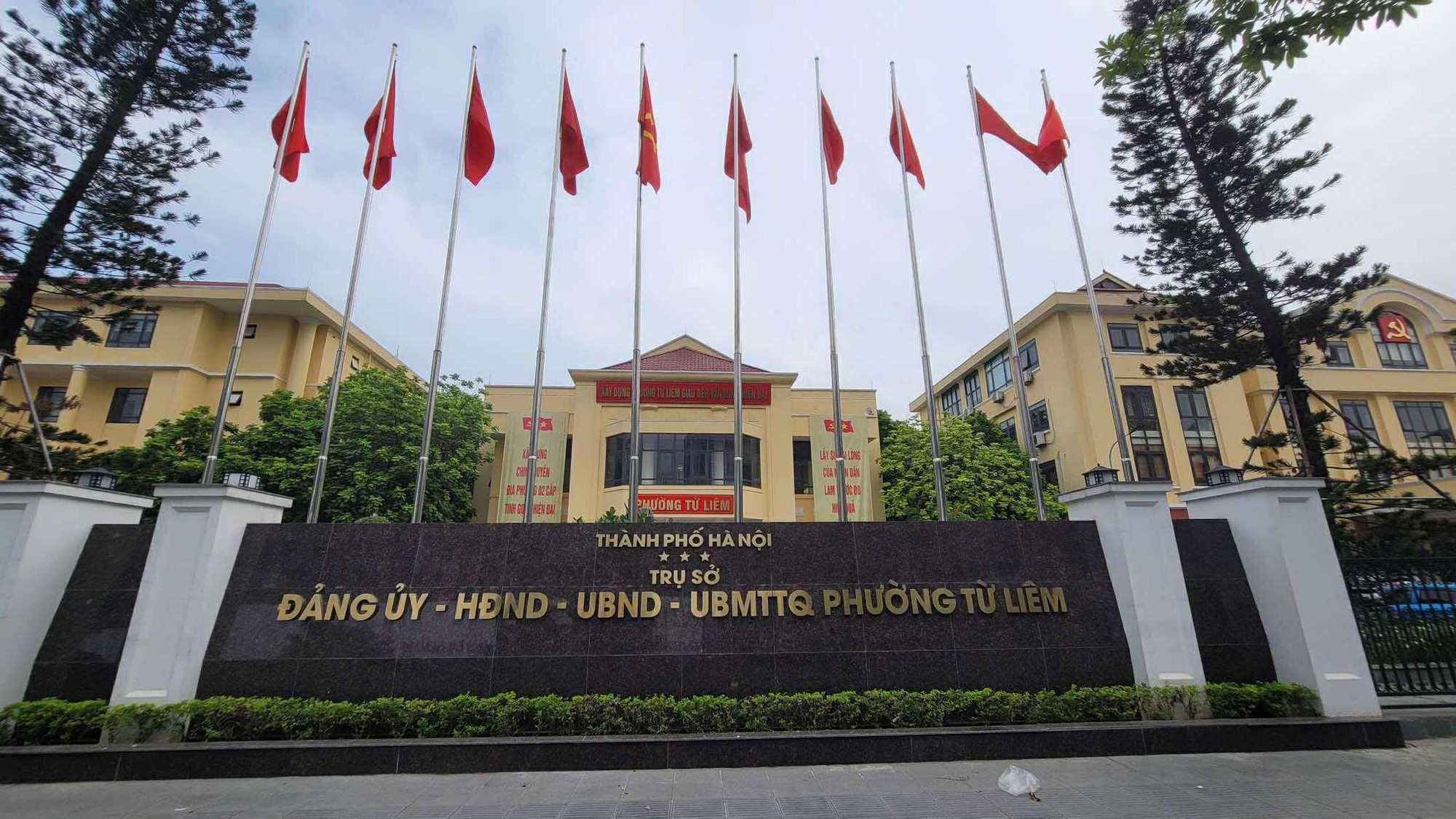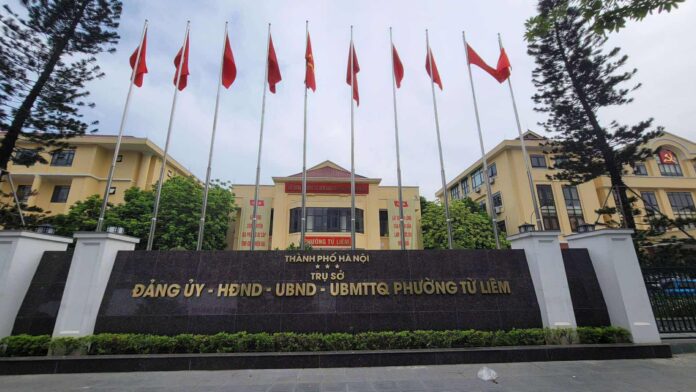On the morning of June 30, Hanoi organized a ceremony to announce the National Assembly Standing Committee’s Resolution and the city’s decisions on the deployment of communal-level administrative units. The ceremony was broadcast live at the city’s main venue at the Vietnam-Soviet Friendship Cultural Palace and held online at 126 communal-level venues.

The headquarters of Nam Tu Liem District has been renamed Tu Liem Ward and is ready to operate from July 1st.
The event was expected to be attended by the President of Vietnam, Mr. Luong Cuong, along with Hanoi’s leaders from the Municipal Party Committee, including standing members, committee members, and heads of Party committees.
During the ceremony, Hanoi announced the National Assembly Standing Committee’s Resolution on the arrangement of the city’s communal-level administrative units in 2025, as well as the Municipal Party Committee’s decision to establish communal-level Party committees. The city also presented decisions to the newly appointed secretaries, chairpersons of the People’s Committees, and chairpersons of the Fatherland Front Committees of the communal-level units.
Following the implementation of the “Proposal for the Reorganization of Administrative Units at All Levels and the Two-Tier Local Government Model” in Hanoi, the number of communal-level units has been reduced from 526 to 126, consisting of 51 wards and 75 communes. Along with other localities nationwide, Hanoi’s communal-level units officially adopted the two-tier local government model starting July 1. After a trial period, the preparations for the official operation of Hanoi’s 126 new communal-level units are now substantially complete.
Mr. Nguyen Hong Nhat, Vice Chairman of the Municipal Party Committee’s Organization Committee, stated that within a week, from June 20 to 26, the 126 new communal-level units, along with the entire political system, conducted a large-scale trial run involving various comprehensive scenarios. The implementation was carried out with urgency, seriousness, and responsibility, ensuring the continuity and smoothness of the new administrative units’ operations, without any power vacuum. Preparations, including human resources, infrastructure, and scenario planning, were given utmost importance and substantially met the requirements for handling ten groups of situations. The coordination mechanism between levels has proven effective, enabling the timely handling of incidents and the resolution of difficulties during the trial period. The leadership and staff of the new communal-level units demonstrated a strong sense of responsibility and quickly adapted to their new roles.
Mr. Nguyen Van Phong, Permanent Vice Secretary of the Municipal Party Committee, commended the great efforts and high sense of responsibility of the city’s communal-level units in conducting the trial run of the two-tier local government model, resulting in positive outcomes and valuable experiences for the official launch on July 1.
Mr. Nguyen Van Phong emphasized that despite thorough preparations, it is impossible to anticipate all scenarios in practice. Therefore, the Party committees, authorities, and especially the leaders of the communal-level units must rely on the actual situation to resolve issues, regardless of whether there are existing regulations or assigned responsibilities.
“The core spirit is to prioritize serving the people and businesses as the most important goal,” Mr. Nguyen Van Phong stressed. “We must not allow a situation where people or businesses come to us for help but are left unattended, unresolved, or passed around in circles.”
















